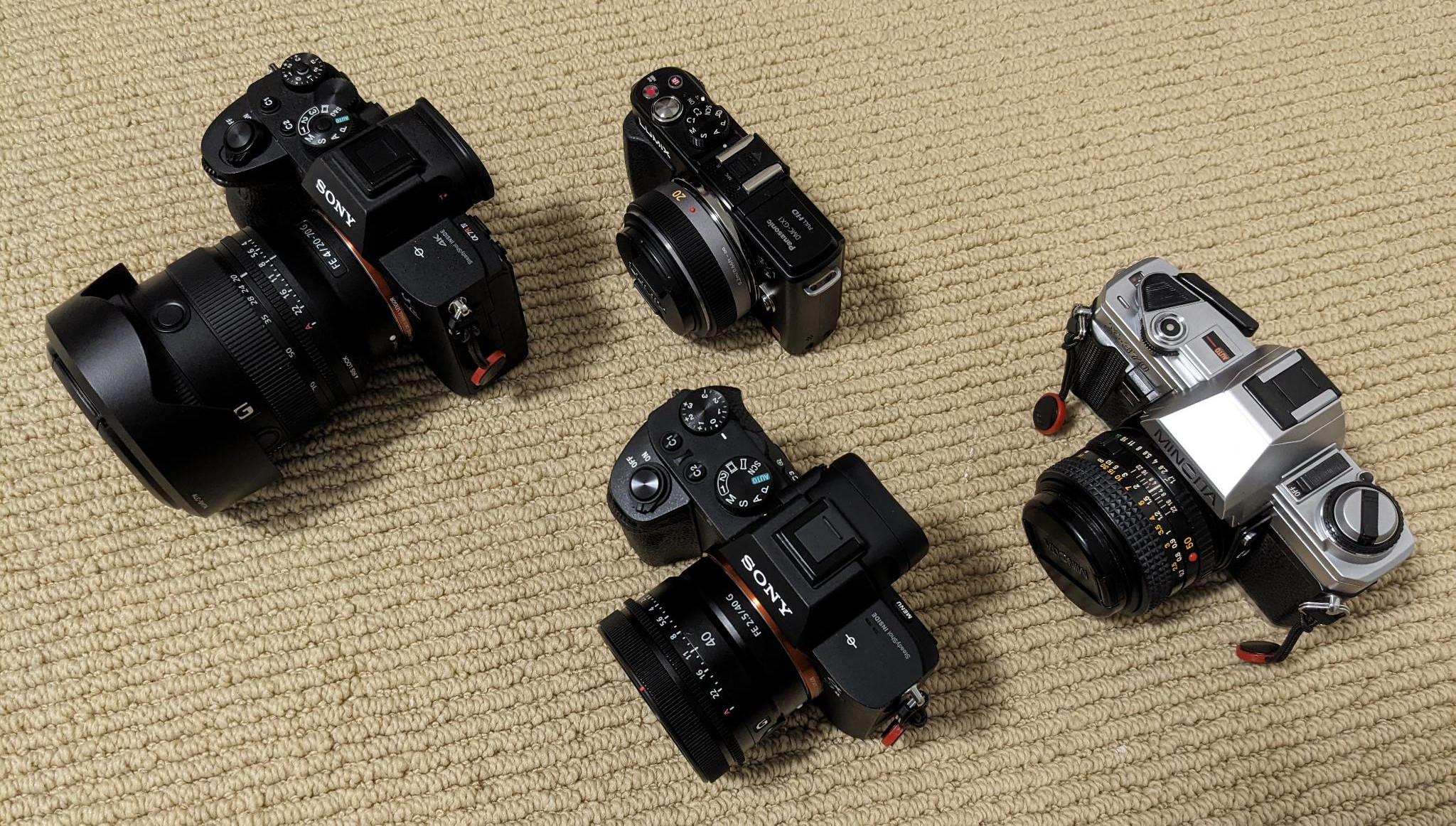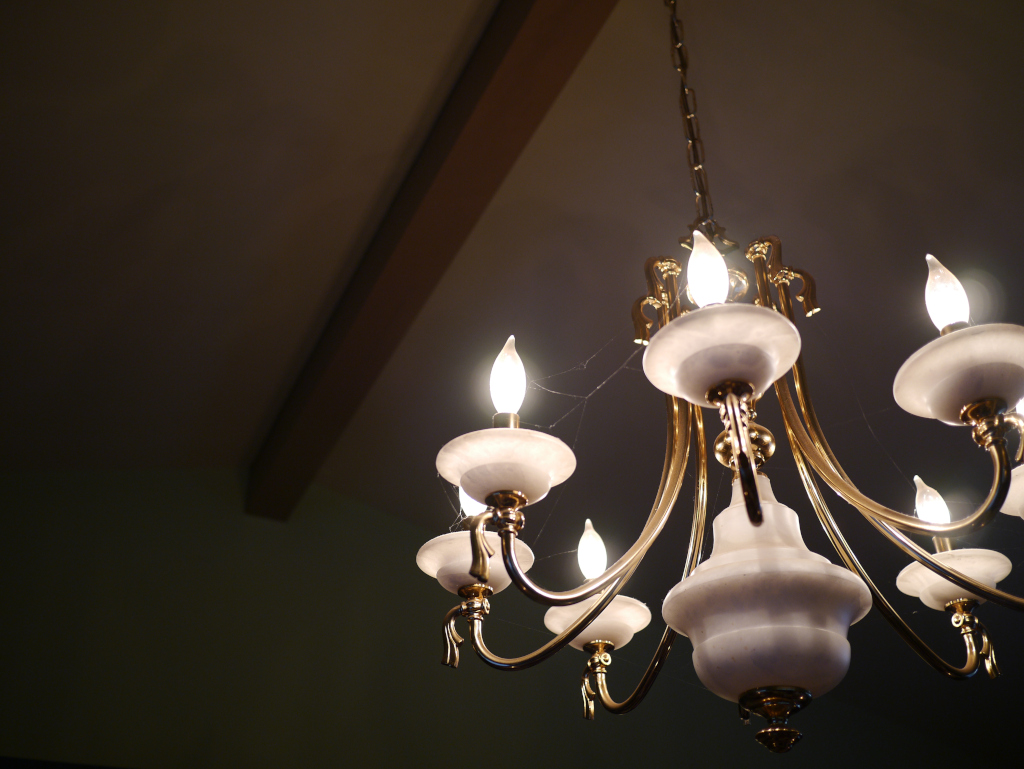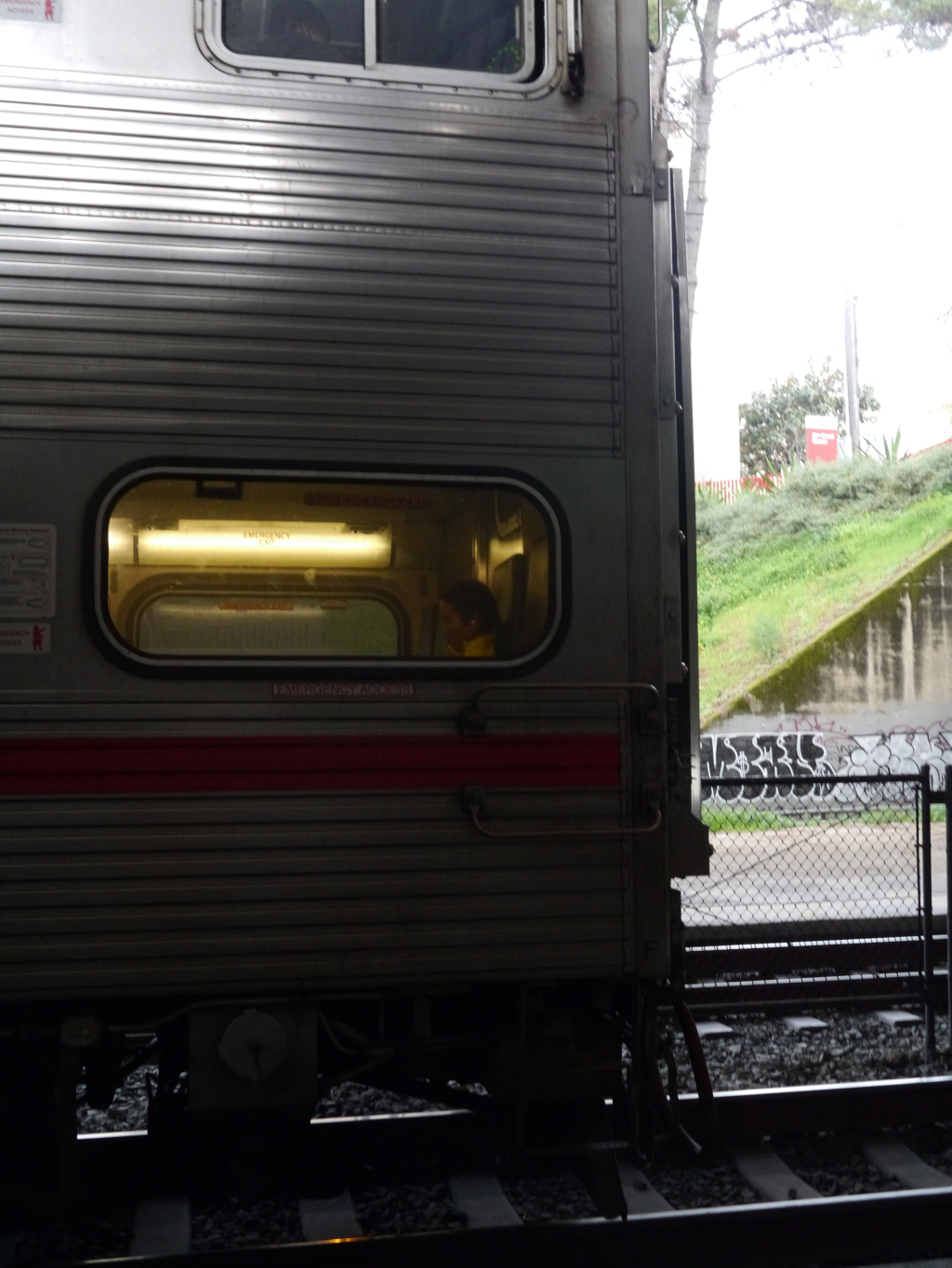A Cheap and Pocketable Camera in 2024
Support this website by purchasing prints of my photographs! Check them out here.Perhaps you're a photographer with a big fancy camera and you're looking for something a little smaller and cheaper to walk around with. Or, maybe you're a new photographer, and you're looking for something with a little more control than your smartphone to experiment with. In any case, a small and cheap camera may be what you're looking for.
At this point in my photography experience I fit in the first category. I bought a Sony a7rIV to replace my Sony a7II and I take the newer and more capable a7rIV out when I do photo shoots, especially sunrise adventures or treks with a tripod. That said, I found myself taking the a7II out when I'm walking around town or going anywhere sketchy. The a7II with a Sony 40mm lens is pretty small and relatively cheap and can just barely fit inside the pocket of my Carhartt jacket or a hoodie.

While I really wanted to sell the a7II I found myself using it in situations where a smaller, lesser camera would suffice. Even still, for that purpose, the a7II is just too big. After doing a lot of research I found a decent small and cheap setup. Specifically, here in 2024, the camera and lens combination discussed herein cost me $305 USD (shipping included, without tax).
While the ideal camera would simply be a fixed lens and body in order to minimize size (often called a point and shoot or compact), in my opinion there's currently a shortage of such cameras leading to price gouging.
Unmet Market Needs
There just aren't enough good point-and-shoot cameras currently in production. The cameras that are still being produced are often back-ordered and are sold for inflated prices on the secondary market. For example, here are some popular choices:
| Camera | Year | MSRP | Used | Availability |
|---|---|---|---|---|
| Ricoh GR III/x | 2019 | $970 | $1,000 | often out of stock new |
| Fuji X100VI | 2024 | $1,600 | $2,300 | back-ordered |
| Fuji X100V | 2020 | $1,000 | $1,400 | discontinued |
| Sony rx100 VII | 2019 | $1,200 | $1,300 | discontinued |
With the cost of cameras on secondary markets like eBay being higher than the MSRP of the cameras, and with some cameras no longer being sold new from the manufacturer, there is clearly a higher demand than there is supply. Plus, the massive backorder and popularity of the Fujifilm X100VI shows just how much folks are clamoring to get a fixed lens compact camera.

Personally, for a secondary camera, my budget is a bit less than those available in this list. I'd like to spend less than $500 for a small camera. And it's not that the smaller the camera the better; I simply need a camera that will fit inside of a pocket.
Purchasing the Camera
After doing a bunch of research the camera I settled on is the 2012 Panasonic Lumix GX1 combined with a 2009 Panasonic Lumix G 20mm F1.7 (40mm equivalent) pancake lens. For what it's worth the lens has the equivalent focal length as the Ricoh GR IIIx.
Note that this setup uses an interchangeable lens (micro four thirds mount) which almost defeats the purpose of an ultra compact. But in this case the camera and lens combination is still so small that I'm happy to look the other way.
Here's a pricing and availability breakdown:
| Product | Year | Used | Availability |
|---|---|---|---|
| Panasonic Lumix GX1 (Multilingual) | 2012 | $270 | Common on MPB |
| Panasonic Lumix GX1 (Japanese) | 2012 | $150 | Common on eBay |
| Panasonic Lumix G 20mm f1.7 | 2009 | $160 |
You might have noticed something interesting with these numbers. Specifically, the Japanese version of the camera is around $120 cheaper than the multilingual option. My guess is that Panasonic made and sold more in Japan than other places. That or the demand is simply lower since only Japan wants the Japanese model.
If you're into tinkering like I am you can buy the cheaper Japanese GX1 and modify the firmware to be multilingual. Here's an article I wrote on the process: Enabling English on a Japanese Panasonic Lumix GX1. Otherwise, you can buy the multilingual version and end up with the same hardware.
The Results
Here are some sample photos taken with the Panasonic Lumix GX1 + Panasonic 20mm lens along with notes on how each image performed. These images are mostly JPG files taken direct from the camera though they have been shrunk down to a width of 1024 pixels since this is a website and not a bandwidth dumpster.
Oranges in a Tree
- Aperture: f1.8
- Shutter: 1/500s
- ISO: 160
This first image turned out decent enough. Notably the bokeh for the out-of-focus leaves in the background nicely fade into the bright white color of the sky. The aperture is almost completely wide open at f1.8 (the lens can do f1.7) in order to emphasis the blur. The ISO is at the lowest for the camera. I would consider this photo a success.
The bright orange near the center does have some problems where the orange peel fades to bright white and some teal banding appears. This overexposure is also present in the RAW file. The teal discoloration can be fixed using the filmic rgb plugin in darktable but the data loss from overexposure simply cannot be recovered.

Cobwebs on a Chandelier
- Aperture: f1.7
- Shutter: 1/60s
- ISO: 160
This second image is okay. There's some rather extreme flaring around the bright lights, possibly a side effect of the lens. There also appears to be some color banding on the ceiling, which would be a side effect of the sensor.

Caltain and Overexposed Sky
- Aperture: f10
- Shutter: 1/30s
- ISO: 1600
This image is indicative of the main problem I have with the camera: overexposure, especially when the sky is visible. I'm not entirely sure if this is a problem with the camera or if I'm just used to how Sony cameras meter light. In this photo the sky on the right is entirely white and the edges of leaves are melted into the sky. There's a whole telephone pole missing in there.

Ergonomics
I have a few gripes with the ergonomics of this camera.
Adjusting Aperture and Exposure Compensation
There is a rocker wheel on the upper right back of the camera. By default rotating the wheel left and right will change the settings of the camera depending on the mode you're in. I shoot in Aperture mode 99% of the time so adjusting this wheel sets the aperture.
The wheel can also be pressed in to toggle its function. Once toggled the wheel adjusts exposure compensation. On my Sony cameras I got into the habit of adjusting aperture and exposure compensation for every shot I take which is easy given the giant dedicated wheels.
With the GX1 I need to constantly press the wheel to switch between adjusting aperture and exposure compensation. This is particularly maddening since the camera doesn't set exposure as well as I would want, with sky often being overexposued. It's even made worse since the pressing of the wheel doesn't toggle the input mode with 100% certainty. About a third of the time pressing the wheel does nothing and there's not a good visual indicator that the toggle happened.
My biggest wish is that I could configure the focus wheel on the lens to adjust aperture when in AF mode. If that were the case I could confidently set aperture and exposure compensation with each photograph and have properly exposed images.
No USB Charging
The camera battery cannot be charged via USB. Instead it requires that the battery be removed and placed in a wall mounted charger. With a camera this small I really expect it to be super portable and having to bring a wall charger everywhere sort of defeats the purpose, especially when traveling abroad.
Even my old Sony a7II supports USB charging. For what it's worth the a7II is about two years newer than the GX1.
Lack of a Viewfinder
The GX1 doesn't have a viewfinder. You can purchase an external one but it costs about as much as the body itself due to a lack of supply. It also makes the camera larger and defeats the pocketability.
With cameras like the Sony RX100 being smaller and having a collapsible viewfinder it does seem like a bit of a shortcoming, especially considering the GX1 is larger than an RX100. However, with the interchangeable lens components taking up space, it is perhaps a necessary evil.
No On-Screen ISO
My Sony cameras show me the ISO that will be selected for a given shot on the screen. With my camera being in auto-ISO this acts as an ever-present reminder that I might be pushing the limits of the sensor. The GX1 is much more prone to noise than either of my Sony cameras so reducing ISO is vital. Ideally the GX1 would always display the ISO value on screen so that I don't need to keep guessing. Images above ISO 1600 are too noisy for my taste.
Final Verdict
This is a fun little camera. And I no longer have an excuse to ever go out without a camera on me. It fits inside of any jacket, hoodie, or cargo pants pocket, though it doesn't fit comfortably in a jeans pocket. I combine it with a Peak Design strap attached to the bottom tripod mount.
While it costs about 1/3 the price of a Ricoh GR III or about 1/4 the price of a RX100, the quality of the images it produces is also about 1/3 as good. Usually with cameras it's like an okay camera costs 1/3 the price of an amazing camera while producing images that are 90% as good, so ultimately the GX1 is somewhat of a letdown. At the end of the day I'd rather have a Ricoh GR III x or Sony RX100.
I hate taking photos with a smartphone for a few reasons and one of them is that there's a trade-off in quality that comes with a smaller physical sensor. The micro four-thirds sensor in the GX1 is larger than a smartphone but it's still smaller than a full frame or even an APS-C sensor. Eventually you get to the point where a small enough sensor suggests you should just be using a smartphone anyway and the GX1 is pushing that boundary. The blurred background bokeh is certainly better than what any smartphone will give you, especially artificial background blur.
I hate to say it but if you have a flagship smartphone from 2023 or 2024 then you probably won't be able to take better photos using the GX1. Your smartphone will have much better dynamic range and probably be higher resolution anyway. Plus in the past year smartphone manufacturers started exposing RAW files which I suspect really boosts the potential with smartphone cameras. While nothing beats the ergonomics of physical knobs, only having one knob on the GX1 doesn't make a compelling argument compared to a smartphone camera.